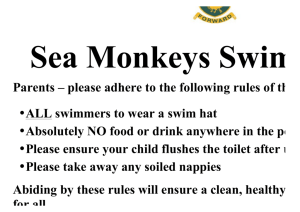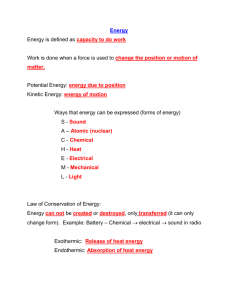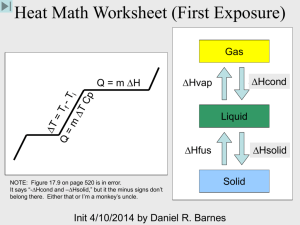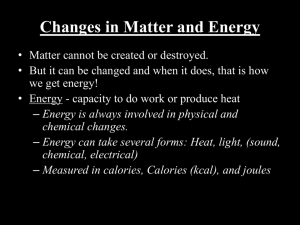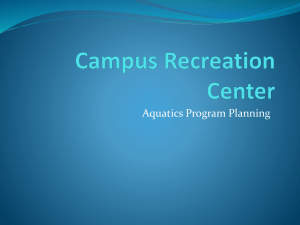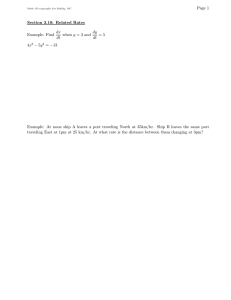Summer Practice 2015 - AP Physics 2
advertisement
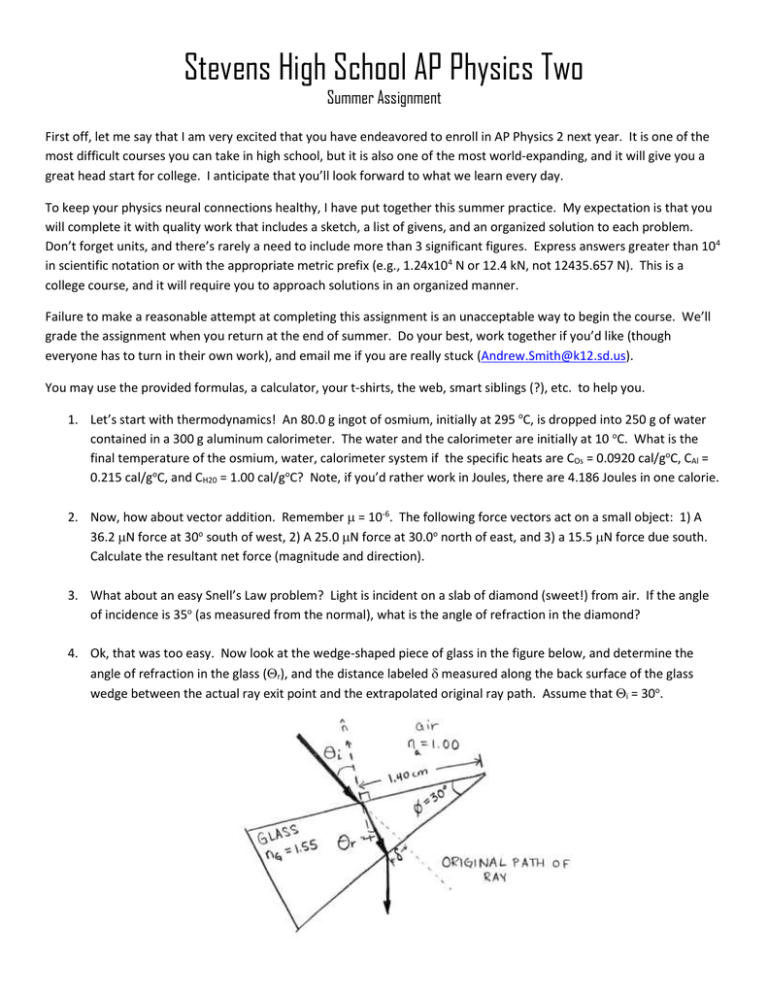
Stevens High School AP Physics Two Summer Assignment First off, let me say that I am very excited that you have endeavored to enroll in AP Physics 2 next year. It is one of the most difficult courses you can take in high school, but it is also one of the most world-expanding, and it will give you a great head start for college. I anticipate that you’ll look forward to what we learn every day. To keep your physics neural connections healthy, I have put together this summer practice. My expectation is that you will complete it with quality work that includes a sketch, a list of givens, and an organized solution to each problem. Don’t forget units, and there’s rarely a need to include more than 3 significant figures. Express answers greater than 104 in scientific notation or with the appropriate metric prefix (e.g., 1.24x104 N or 12.4 kN, not 12435.657 N). This is a college course, and it will require you to approach solutions in an organized manner. Failure to make a reasonable attempt at completing this assignment is an unacceptable way to begin the course. We’ll grade the assignment when you return at the end of summer. Do your best, work together if you’d like (though everyone has to turn in their own work), and email me if you are really stuck (Andrew.Smith@k12.sd.us). You may use the provided formulas, a calculator, your t-shirts, the web, smart siblings (?), etc. to help you. 1. Let’s start with thermodynamics! An 80.0 g ingot of osmium, initially at 295 oC, is dropped into 250 g of water contained in a 300 g aluminum calorimeter. The water and the calorimeter are initially at 10 oC. What is the final temperature of the osmium, water, calorimeter system if the specific heats are COs = 0.0920 cal/goC, CAl = 0.215 cal/goC, and CH20 = 1.00 cal/goC? Note, if you’d rather work in Joules, there are 4.186 Joules in one calorie. 2. Now, how about vector addition. Remember = 10-6. The following force vectors act on a small object: 1) A 36.2 N force at 30o south of west, 2) A 25.0 N force at 30.0o north of east, and 3) a 15.5 N force due south. Calculate the resultant net force (magnitude and direction). 3. What about an easy Snell’s Law problem? Light is incident on a slab of diamond (sweet!) from air. If the angle of incidence is 35o (as measured from the normal), what is the angle of refraction in the diamond? 4. Ok, that was too easy. Now look at the wedge-shaped piece of glass in the figure below, and determine the angle of refraction in the glass (r), and the distance labeled measured along the back surface of the glass wedge between the actual ray exit point and the extrapolated original ray path. Assume that i = 30o. 5. Materials engineers selected a carbon-carbon composite for the heat shield of a reentry capsule. This material has a coefficient of linear expansion of CC = 1.2x10-8 oC-1. By what fraction does the area of the tile (with L = 17 cm and H = 21 cm at T = 64 K in space) increase when the temperature of the tile reaches 4800 K? Hint: You’ll need to do two thermal expansion calculations, one for each side. a. Repeat this analysis with steel (neglect the fact that it would vaporize at this temperature). steel = 10.8x10-6 oC-1. That’s not a typo – thermal expansion coefficients are often expressed as some number x10-6, even if it’s not proper scientific notation. 6. A small spherical sample of gas is radically compressed from its initial radius, Ro to a final radius Rf = Ro/19. If this is done very slowly so that the temperature of the gas is constant, what is the final pressure in the sample? Assume Po is atmospheric pressure, Po = 101.3 kPa. How do you expect your answer would change if the compression occurred very rapidly? 7. If you dive more than about 15 meters below the surface of the ocean, you will find that you are no longer buoyant. You will sink rather than float (it was a bit disconcerting when I first experienced this). Taking the density of sea water to be 1030 kg/m3 and the acceleration due to gravity to be 9.81 m/s2 downward, a. What is the pressure at this 15m depth? b. What is the force on one fingernail (Area ~ 1cm2)? Please express your answer in pounds of force (lbf – usually just written lb). 1.0 lbf = 4.45 N. For a terrifying application of this lack of buoyancy, consider that you would NOT know which was ‘up’ if you did such a dive at night. People have survived driving their cars off of bridges at night, and they describe how they just had to pick a direction and swim out into the inky blackness hoping they were going the right direction. Yep, that’s creepy. 8. In the figure on the next page, I am representing progressive ‘zooming-in’ on one of your eyes until we can see your DNA and the atoms which comprise it. Consider two carbon atoms (13C, to be precise) which contain 6 protons and 7 neutrons each. If each proton has the fundamental charge, and the nuclei of two 13C atoms are 5 Å (note, 1 Å = 1x10-10 m) apart, a. What is the electrostatic force between them? b. If the mass of each 13C is 2.16x10-26 kg, what acceleration would each nuclei experience if your answer in part (a) was the net force on each nucleus? c. Why don’t they blow themselves apart? 9. Now for some right-hand rule practice. Consider the moving charged particles and magnetic fields shown below. For each case, what is the direction of the magnetic force on the particle? Be careful of signs! 10. Consider the circuit shown below. Determine… a. The equivalent resistance of the entire circuit, b. The total current leaving the battery, c. The direction that electrons are moving (clockwise or counterclockwise), d. And, which resistor dissipates the most power. 11. So….you are on a ship which is manned by 63 people. It is 8:00pm on Tuesday, and you just finished having tacos for dinner. You realize that this was probably a mistake. The ship is in the Canary Islands and is dealing with a category-5 hurricane called Hurricane Omar. Within the hurricane, a disoriented European Swallow (ms = 64 g) runs into the ship at 11 m/s. You bring the engines up to full speed, and set a course 13o south of west. It just so happens that the ship is painted blue with a yellow stripe running around the water line (blue = 460 nm, yellow = 560 nm). The average value of gravity at your location is 9.806 m/s2. What is the net force on the ship if its net acceleration is 10 m/s2 at 13o south of west, and it has a mass of 5.00x106 kg? Hint: Sometimes problems have extraneous information in them. 12. Now for some non-calculator-based work. These are the same suggestions as I gave for AP 1, but they are no less cool. a. Go outside (on at least three consecutive summer nights) and observe the star Algol. This should help: http://www.starrynighteducation.com/skychart/. It should automatically enter your latitude and longitude. If not, look it up for Rapid City or wherever you are solving this summer assignment. Algol is in the constellation Perseus. Note how it’s brightness changes. Now realize that this is due to the fact that it is actually two stars orbiting each other….VERY RAPIDLY. b. While you’re at it, go hiking at night, and notice how much warmer you feel if you stand under a tree on a clear night than you do when you stand directly under the sky. Why? c. August 14, 2015. There will be a new moon, and the Perseid Meteor Shower will be at its peak tonight. It should be awesome! Observe it. If you’re lucky, you’ll get to see a ‘fireball’ when a meteor violently breaks up with as much energy as a small nuclear weapon. I’ve only seen one in my life. d. Go to a lake (not necessarily at night), swim out so that the water is about 10 feet deep (this presumes you can swim, do not attempt if you cannot swim – or learn to swim, then try), and dive down to the bottom. Notice how much colder the water is just beneath the surface and think about why. e. Take out an old-fashioned compass during a thunderstorm (or watch a video of this phenomenon if you are compass-deprived). Observe and explain the effects. f. While watching this thunderstorm, explain why weather around here almost always seems to come in from the west. g. Ride a bike. Why does it get progressively harder to balance the slower you ride? h. Go hiking, preferably somewhere high (the Big Horn Mts, the CO Rockies, or even Harney Peak will work), and explain why the oxygen content of the air is so much lower – thus, it’s a bit harder to exert yourself. (The 02 content is about 10% lower on Harney Peak and 30% lower on peaks around 14,000’ high).
